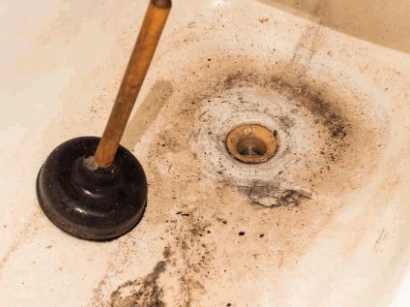Tips to Effectively Apply Plunger and Drain Cleaner: Expert Tips
Tips to Effectively Apply Plunger and Drain Cleaner: Expert Tips
Blog Article
They are making a few great points regarding How to Use a Plunger to Unclog a Toilet or Drain in general in this content just below.

Introduction
Correct maintenance of house drains pipes is vital for preventing obstructions and ensuring smooth water circulation. Among the secret devices in every property owner's toolkit is the plunger, together with different drainpipe cleaners made to deal with stubborn blockages effectively. This article discovers how to make use of bettors and drainpipe cleansers properly to maintain your drains moving easily.
Section 1: Comprehending Plungers
Types of Plungers
There are a number of kinds of bettors available, each created for different kinds of drains pipes and obstructs. The most common types include cup bettors, flange bettors, and accordion plungers.
How Plungers Work
Plungers service the principle of creating pressure and suction to displace obstructions. When properly applied over a drain, they create a vacuum cleaner that can take out debris or break up blockages.
Picking the Right Bettor
Picking the right bettor relies on the sort of drain and the nature of the blockage. Cup bettors are optimal for sinks and bathtubs, while flange plungers are much better matched for bathrooms due to their style.
Typical Errors with Plungers
Avoiding these mistakes makes certain effective plunging: incorrect seal around the drainpipe, not enough force, and not clearing surrounding debris.
Area 2: Utilizing Plungers Efficiently
Preparation
Before diving, make certain the plunger covers the drainpipe entirely and develops a tight seal. Clear any type of noticeable debris around the drain opening.
Technique
Beginning with mild plunging activities to build suction. Increase pressure progressively, making use of a steady rhythm. Repeat as necessary up until the drainpipe clears.
Fixing Tips
If diving doesn't function, attempt readjusting the seal, using oil jelly for a better seal, or utilizing a various kind of plunger.
Area 3: Recognizing Drain Cleansers
Types of Drainpipe Cleaners
Drain pipes cleansers can be chemical or enzymatic. Chemical cleaners utilize solid chemicals to dissolve blockages, while chemical cleansers use natural enzymes to break down raw material.
Just How Drainpipe Cleaners Work
Chemical cleaners react with blockages to dissolve them, while enzymatic cleaners break down organic materials like hair and grease without harming pipes.
Safety Considerations
Always wear gloves and eye protection when using chemical drain cleansers. Ensure adequate air flow and adhere to maker directions thoroughly.
Eco-Friendly Alternatives
Think about using vinegar and cooking soda or enzyme-based cleansers for green choices that are safer for pipelines and the environment.
Area 4: Making Use Of Drain Cleaners Successfully
Application Techniques
Put chemical cleansers directly right into the drainpipe opening. Allow them to help the advised time prior to flushing with hot water. Enzymatic cleaners ought to rest overnight.
Preventative measures
Prevent blending different kinds of cleansers, as this can generate hazardous fumes. Never ever use chemical cleaners along with a bettor, as splashing can occur.
Handling Persistent Blockages
For persistent clogs, consider making use of a plumbing serpent or calling a professional plumbing technician to stop damage to pipes.
Verdict
In conclusion, comprehending exactly how to make use of bettors and drainpipe cleansers effectively is essential for keeping healthy and balanced pipes systems. By choosing the right tools and strategies, homeowners can deal with small clogs and stop significant pipes concerns down the line.
How to Use a Plunger to Unclog a Drain
The humble plunger is a simple yet effective tool for breaking clogs in sinks, tubs and toilets. This handy tool is easy to use. You can make the most of its power if you understand how it works. Ready to dive in? Here’s what you need to know.
Safety First!
Never use a plunger with drain chemicals. Water will splash as you work, and the chemicals can spatter, burning skin and eyes. It’s a good idea to use rubber gloves and wear safety goggles when you work on a clog.
Choose the Right Tool for the Job
Plungers come in two different styles. Sinks, bathtubs and showers require a cup plunger. Like its name suggests, the rubber end is shaped like a cup. Use a flange plunger on toilets. These plungers have a rubber funnel extending from the cup. A plunger needs to be big enough to cover the drain.
Ready, Set, Plunge!
Coat the rim: Coat the plunger rim with petroleum jelly. This helps make a better seal.
Block outlets: Hold a wet rag over nearby outlets such as the overflow vent or the drain in a second sink.
Release air: Insert the plunger at an angle into the water. Water will displace air in the cup. A water-filled cup is more forceful than one filled with air.
Keep the plunger upright: Hold the plunger perpendicular to the drain. Use fast, forceful strokes, but make the first stroke gentle. The first stroke can create a splash if the cup still contains air. Thrust the plunger 15 to 20 times.
Snap off the plunger: The final stroke should be a strong upward motion that ends when the plunger snaps off the drain.
Repeat the process: you may need to repeat this sequence several times. When the water drains away, your work is done. High-five! https://plumbernw.com/blog/how-to-use-a-plunger-to-unclog-a-drain/

Application Techniques
Put chemical cleansers directly right into the drainpipe opening. Allow them to help the advised time prior to flushing with hot water. Enzymatic cleaners ought to rest overnight.
Preventative measures
Prevent blending different kinds of cleansers, as this can generate hazardous fumes. Never ever use chemical cleaners along with a bettor, as splashing can occur.
Handling Persistent Blockages
For persistent clogs, consider making use of a plumbing serpent or calling a professional plumbing technician to stop damage to pipes.
Verdict
In conclusion, comprehending exactly how to make use of bettors and drainpipe cleansers effectively is essential for keeping healthy and balanced pipes systems. By choosing the right tools and strategies, homeowners can deal with small clogs and stop significant pipes concerns down the line.
How to Use a Plunger to Unclog a Drain
The humble plunger is a simple yet effective tool for breaking clogs in sinks, tubs and toilets. This handy tool is easy to use. You can make the most of its power if you understand how it works. Ready to dive in? Here’s what you need to know.
Safety First!
Never use a plunger with drain chemicals. Water will splash as you work, and the chemicals can spatter, burning skin and eyes. It’s a good idea to use rubber gloves and wear safety goggles when you work on a clog.
Choose the Right Tool for the Job
Plungers come in two different styles. Sinks, bathtubs and showers require a cup plunger. Like its name suggests, the rubber end is shaped like a cup. Use a flange plunger on toilets. These plungers have a rubber funnel extending from the cup. A plunger needs to be big enough to cover the drain.
Ready, Set, Plunge!
Coat the rim: Coat the plunger rim with petroleum jelly. This helps make a better seal. Block outlets: Hold a wet rag over nearby outlets such as the overflow vent or the drain in a second sink. Release air: Insert the plunger at an angle into the water. Water will displace air in the cup. A water-filled cup is more forceful than one filled with air. Keep the plunger upright: Hold the plunger perpendicular to the drain. Use fast, forceful strokes, but make the first stroke gentle. The first stroke can create a splash if the cup still contains air. Thrust the plunger 15 to 20 times. Snap off the plunger: The final stroke should be a strong upward motion that ends when the plunger snaps off the drain. Repeat the process: you may need to repeat this sequence several times. When the water drains away, your work is done. High-five! https://plumbernw.com/blog/how-to-use-a-plunger-to-unclog-a-drain/

Do you really like reading up on How to Use a Plunger to Unclog a Toilet or Drain? Make feedback down below. We would be glad to listen to your opinions about this posting. We are looking forward that you visit us again later on. Enjoyed our write up? Please share it. Let somebody else locate it. I praise you for your time. Come back soon.
Instant Quote Report this page